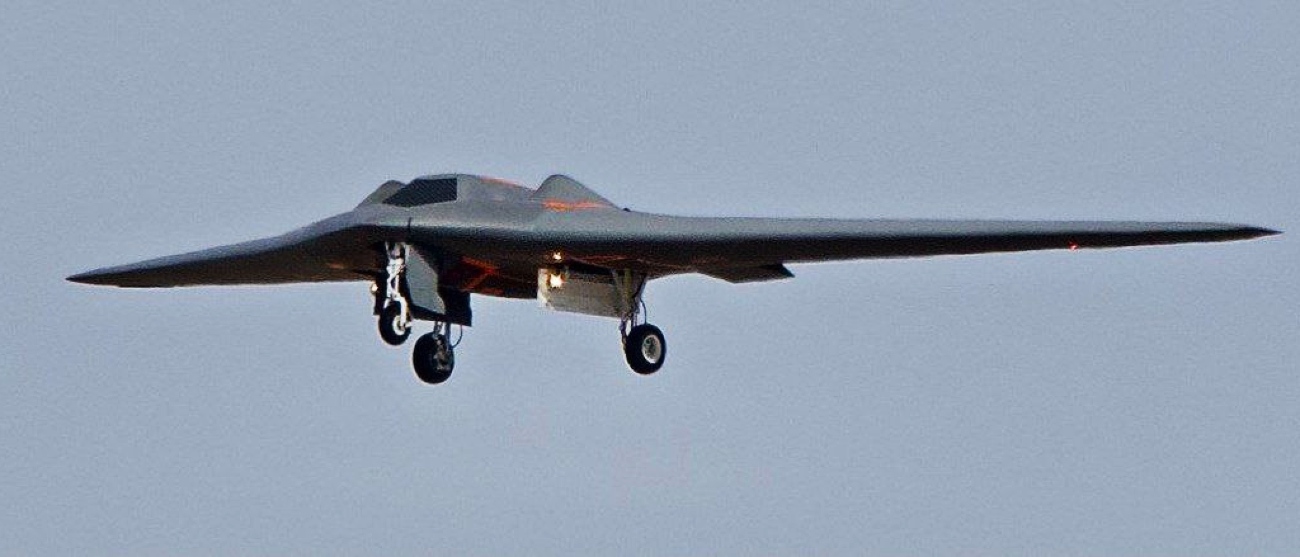There is no denying that the Ukrainian air defense has prevented the Russian fighter jets from being deployed to their fullest potential and thwarted Russia from achieving air superiority in the war.
MUST READ: Russia Bombs Ukraine’s MiG-29 Air Base After Striking Its Su-24MR Facility To Cripple Its Counter-Offensive
And the fact is not lost on the Russian military planners. Iran is now helping Moscow to build a drone factory, and Russian experts say that the Iranian stealth drone Shahed Saeghe, reverse-engineered from captured US Air Force’s RQ-170 Sentinel, is the best bet to achieve air domination in the face of the Ukrainian counter-offensive.
According to an intelligence report released by the White House, satellite imagery has confirmed the construction of a drone factory near Moscow, and it could be operational by the beginning of 2024.
The report comes against the backdrop of the US seeking to disrupt the sea route through the Caspian Sea, which Iran uses to supply Russia with drones. The Iranians have also been transporting spare parts for civil aviation utilizing the port of Bandar Anzali. The destination is Russian ports in Astrakhan or Makhachkala.
According to the US National Security Council spokesperson John Kirby, US intelligence officials have information that confirms the construction of a drone factory in Russia’s Alabuga special economic zone near Moscow. The information comes based on satellite images taken in April 2023.
Iran-built drones like Mohajer, Arash-1 and Arash-2, Shahed-131, and Shahed 136 have been used by Russia to target Ukrainian energy and critical infrastructure.
A piece authored in the semi-government-owned Iranian Mehr News Agency suggests that Russia should opt for Iranian UCAVs instead of using the indigenous S-70 Hunter heavy UCAVs.
“We are talking about a family of stealth strike and reconnaissance drones Saeghe, created in the Islamic Republic based on the technology of the captured US Air Force RQ-170 Sentinel,” reads the report, while boasting about how the Iranians carefully studied the “secret American UAV” and “created several multifunctional drones on its basis.”
“The Shahed-161 Saeghe is jet-powered, while the cheaper Shahed-141 Saeghe is propeller-driven and is a smaller version of the RQ-170 Sentinel. Their armament is represented by Sadid-345 guided bombs or Sadid-1 anti-tank guided missiles,” the report read.
The report suggests that using these reconnaissance and strike UAVs could help the Russian military burn the enemy’s armored vehicle without endangering its ground-based anti-tank systems.
“Using drones as carriers, it would be possible to throw planning bombs far beyond the front line without risking the lives of bomber pilots and attack aircraft. At the same time, unlike Geraniums, UAVs of this family are reusable.
The “flying wing” design and the fact that composite materials were used in the manufacture, which reduces visibility on the radar, will contribute to increasing their survival in combat,” the report said, making a case for the Iranian stealth drones.
The report suggests that to subdue the Ukrainian S-300 air defense systems, Russia could release a flock of Shahed 136 Geranium loitering drones and other suicide drones to target the Ukrainian Buk and S-300s.
The air-defense system will either have to stay off and let the UAVs do their job unhindered or turn on and be destroyed.
“Due to drones, our troops could consistently clear the territory of enemy air defense and knock out its artillery and armored vehicles without unnecessary losses during the counter-offensive.”
Drones Powered By Stolen Western Technology
Ukraine has been ravaged by swarms of cheap and deadly kamikaze drones, most of which have been sourced from Iran. Unable to build a reliable air force due to global sanctions, the Iranian forces turned to lower-cost, basic drones made by reverse engineering the US drones or stolen Western technology.

According to the military analysis group Oryx’s handbook on Iranian drones, Iran operates over a dozen military models, each built in multiple configurations.
It hit the jackpot on December 5, 2011, when Iran claimed that its cyber warfare unit commandeered the US’ Lockheed Martin RQ-170 Sentinel UAV and forced it to land near the city of Kashmar in northeastern Iran.
By 2012, the Islamic Revolutionary Guard Corps claimed to have succeeded in gleaning data from the US drone and were building a process to create a replica of the aircraft.
Iran denied the US’ demands to return the UAV. Tehran even claimed that countries like China and Russia had approached it to get information on the drone.
Iran rolled out a drone similar to the US’ Sentinel and called it Saeghe in 2016. Its Yasir is similar to the US Scan Eagle Drone after capturing the latter in 2012. Iran has never denied, rather it has been flaunting that its UAVs have been reverse-engineered from the US drones.
Conflict Armament Research (CAR), a UK-based organization that investigates weapons’ components, has established that the Shahed-136 drones sold to Russia by Iran are powered by an engine based on German technology – technology illicitly acquired by Iran almost 20 years ago.
The CAR probed 20 Iranian-made drones and munitions in Ukraine, half of which were Shahed-136s. The investigation confirmed that the motor in the drones was reverse-engineered by an Iranian company called Oje Parvaz Mado Nafar, aka Mado, based in the Qom province. The company has been sanctioned by the UK, US, and European Union in December 2022.
The detailed examination of the Shahed and Mohajer drones revealed about 70 components had been sourced from outside Iran. More than 80 percent of the components have come from the US, produced mostly between 2020-2021.

The investigations revealed that the engine of the Shahed 136 drones is reverse-engineered from German Limbach Flugmotoren L-550 UAV engines that were illicitly exported to Iran in 2006.
Russia has been sending swarms of its Kamikaze drones to Ukraine. About 400 of its drones attacked Ukrainian infrastructure between August and December 2022. More attacks came in January and February 2023. The Iranian-made Shahed 136 carried out the bulk of the attacks.
- Ritu Sharma has written on defense and foreign affairs for over a decade. She holds a Master’s Degree in Conflict Studies and Management of Peace from the University of Erfurt, Germany. Her areas of interest include Asia-Pacific, the South China Sea, and Aviation history.
- She can be reached at ritu.sharma (at) mail.com




